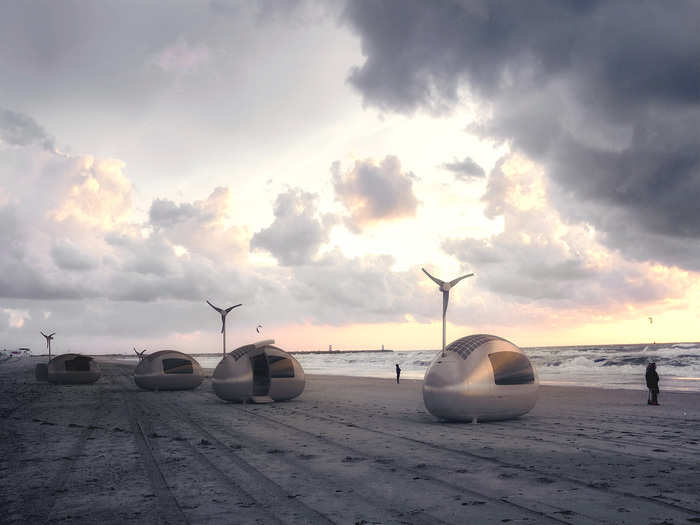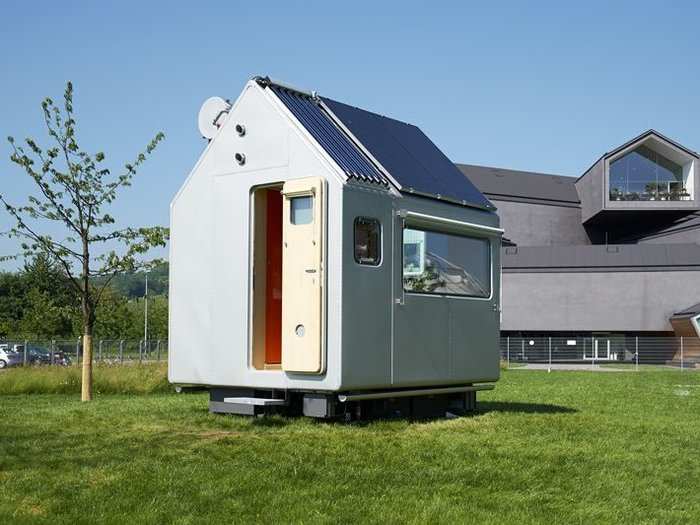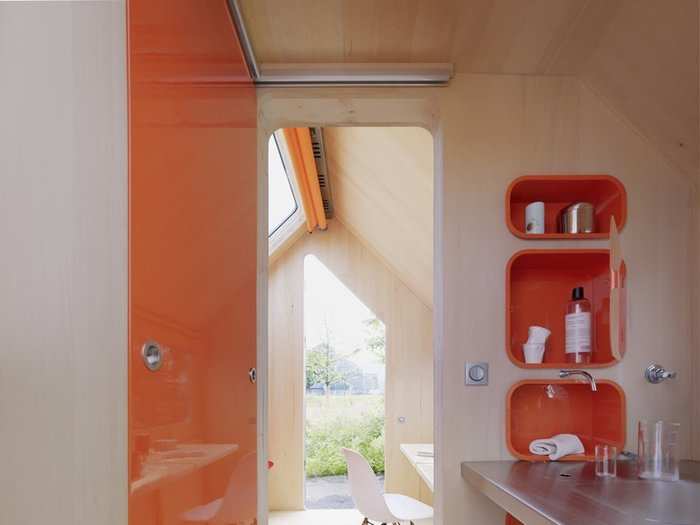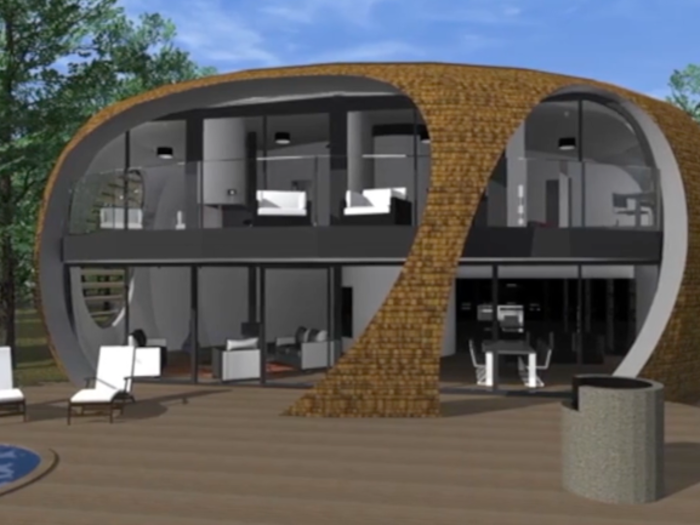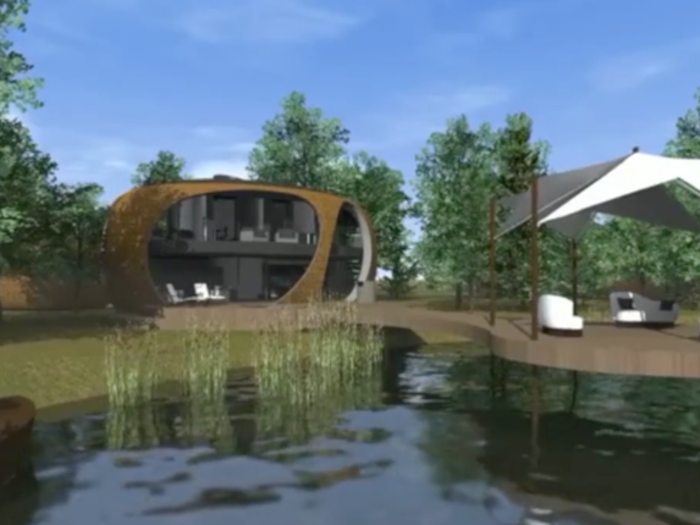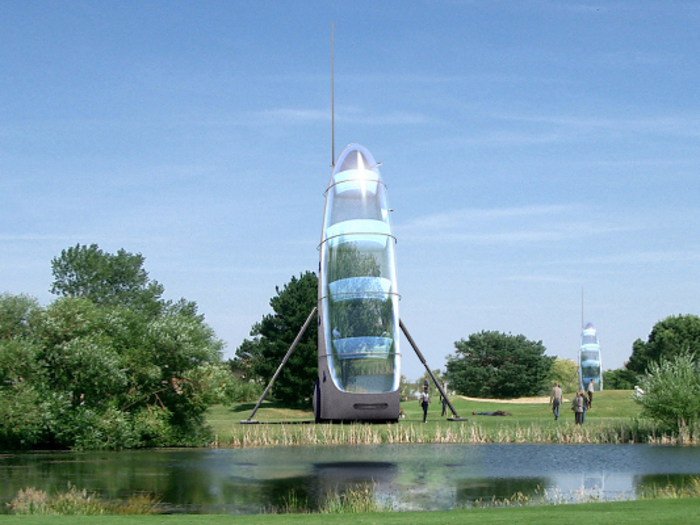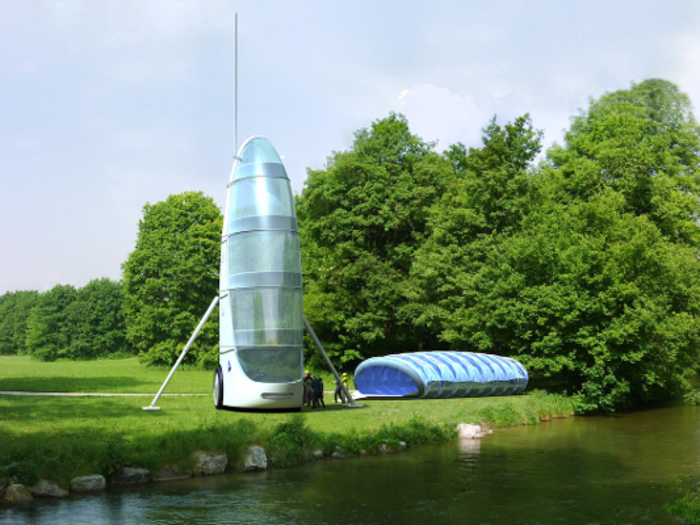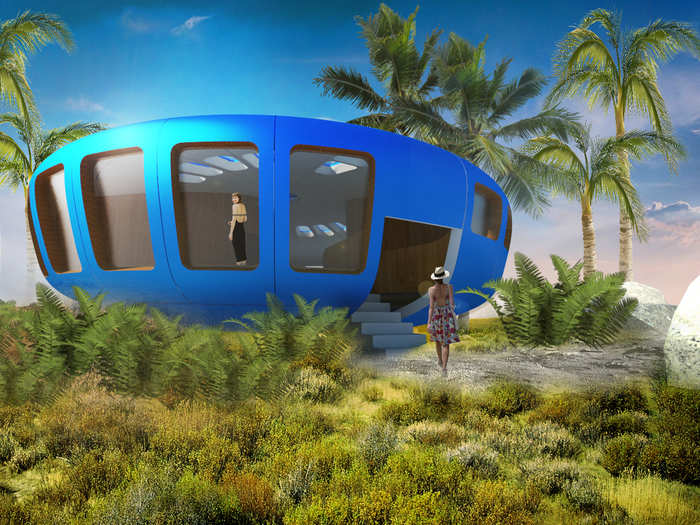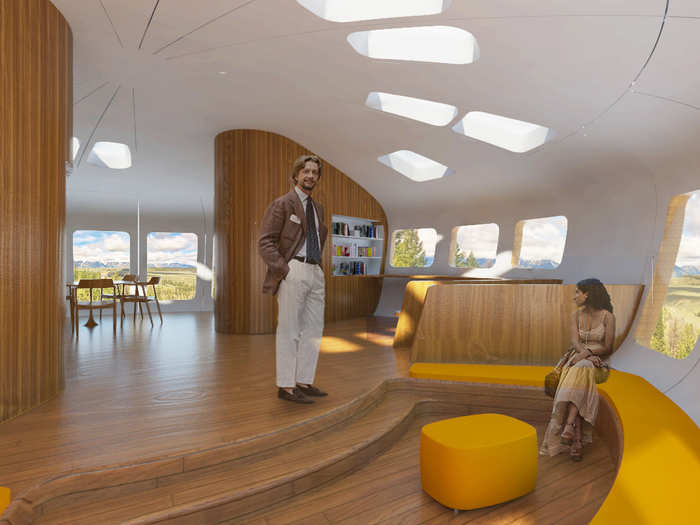The pod can collect water that lands on its surface, and filter it in a built-in tank.
Inside, the pod can fit a bed, a working and dining space, a toilet, a shower and a kitchenette. It has two openable windows and comes with a data network connection. To transport the pod, just roll it on its four extendable wheels.
50 limited-edition capsules are currently available at $87,777 each. A second generation of Ecocapsule is expected to be sold in 2017, and can be preordered on Ecocapsule's website.
Well-known architect Renzo Piano designed the Diogene as a mini-house prototype for German furniture company Vitra.
Like the Ecocapsule, the Diogene is completely self-sufficient — it collects, filters and reuses water, and supplies its own power via solar panels.
The tiny house has a surface area of 8’2” x 9’7” and is easily transported.
Inside, the design includes a living room with a pull-out sofa and folding table, as well as a shower, toilet and kitchen.
The PassivPod, designed by England-based design firm Koru Architects, is conceived as a sustainable lakeside retreat.
The solar roof harvests energy that can be used to power the pod and heat water, and a sealed wood-burning stove can provide warmth in winter months. A central stairway lit via skylight helps bring sun into the house during the day, while also providing ventilation.
A rainwater harvesting tank supplies water to cisterns and a washing machine.
To further integrate the natural world, the pod is designed with an attached timber deck that can extend the living space over a body of water, creating a jetty where a boat could be tied.
The PassivPod is not for sale yet, but Koru Architects estimate that once it's available, the building will cost $1,971 per square meter, or about $459,950 total.
The Mercury House Two vertical pod was designed by Italian company Architecture and Vision in 2004.
Its glass-reinforced plastic coating takes advantage of natural heat energy, and translucent solar cells power stand-alone batteries.
The design also includes an optional inflatable automated greenhouse, which can be connected to the house to allow its inhabitants to grow their own food.
When connected, the greenhouse is programmed to do onsite waste treatment.
The prefabricated single-family house was created to be easily transported and manufactured — it has built-in wheels, and assembly is supposed to take only two hours. Pods are not currently available for sale, however.
The Nest Pod, designed by architect Fernando Romero for Revolution Precrafted Properties, is intended for those who want the ability to move their home to different locations.
The shifted elliptical shape is inspired by natural forms and provides passive shading. The building’s interior is split along a North-South axis, creating natural ventilation.
Since each pod is customizable, interested buyers can inquire about pricing with Revolution Precrafted Properties.
The pods are designed to be prefabricated off-site, so that they can be easily shipped and constructed.
The space is just over 1,022 square feet, making it easy to fit in a variety of locations.

